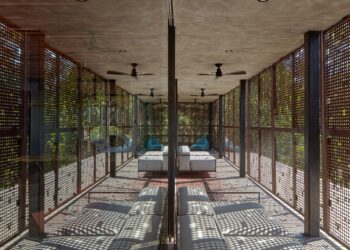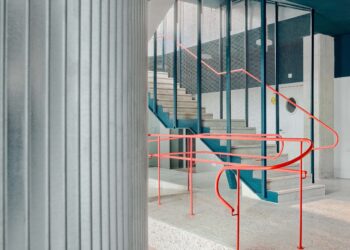‘Nature, Nurture, Future’ showcasing a resilient, livable city
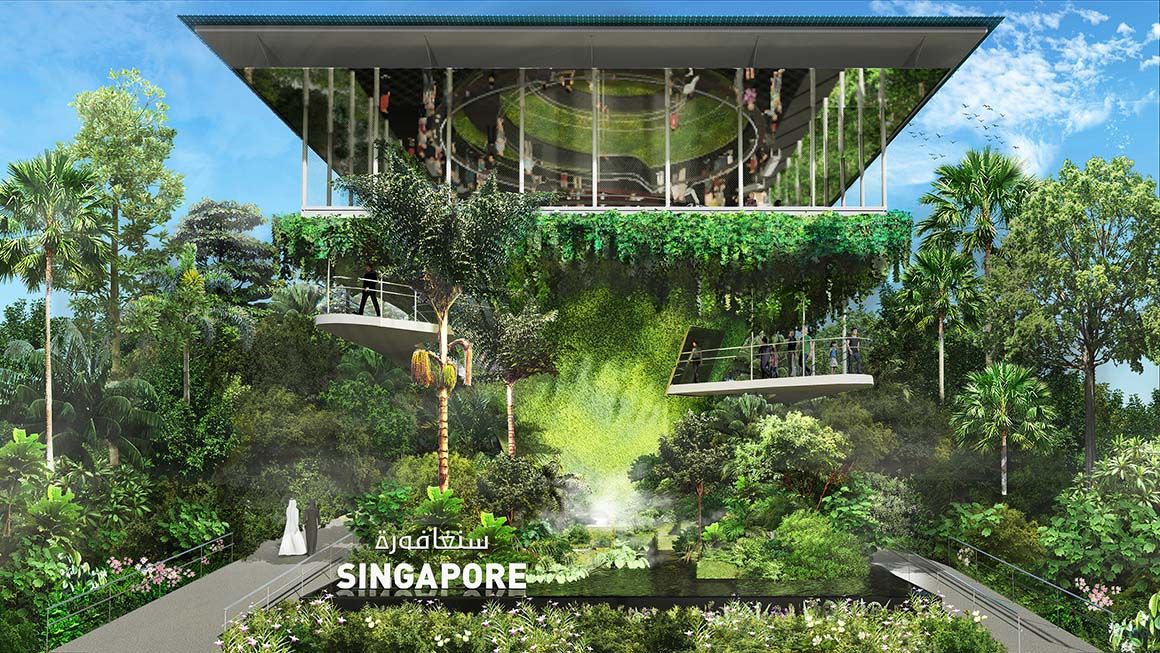
Singapore-based architecture firm WOHA has been appointed to design the Singapore Pavilion for the 2020 World Expo, held in Dubai.
Located in the Expo’s Sustainability District, the Pavilion is inspired by its theme of ‘Nature, Nurture, Future’ and aims to showcase Singapore’s innovations and aspirations as a resilient, livable city in a garden. It operates entirely on solar energy and solar desalination systems and is net-zero in energy over the six-month World Expo period.
“We aim to show that it is possible to build a self-sufficient green oasis anywhere in the world, even in the desert. Planting more trees and creating more green spaces is the best way to take immediate action against climate change. Singapore has been exploring many ways to become one of the greenest places in the world and we hope to share this knowledge and innovation at the World Expo,” says Wong Mun Summ, co-founding director of WOHA.
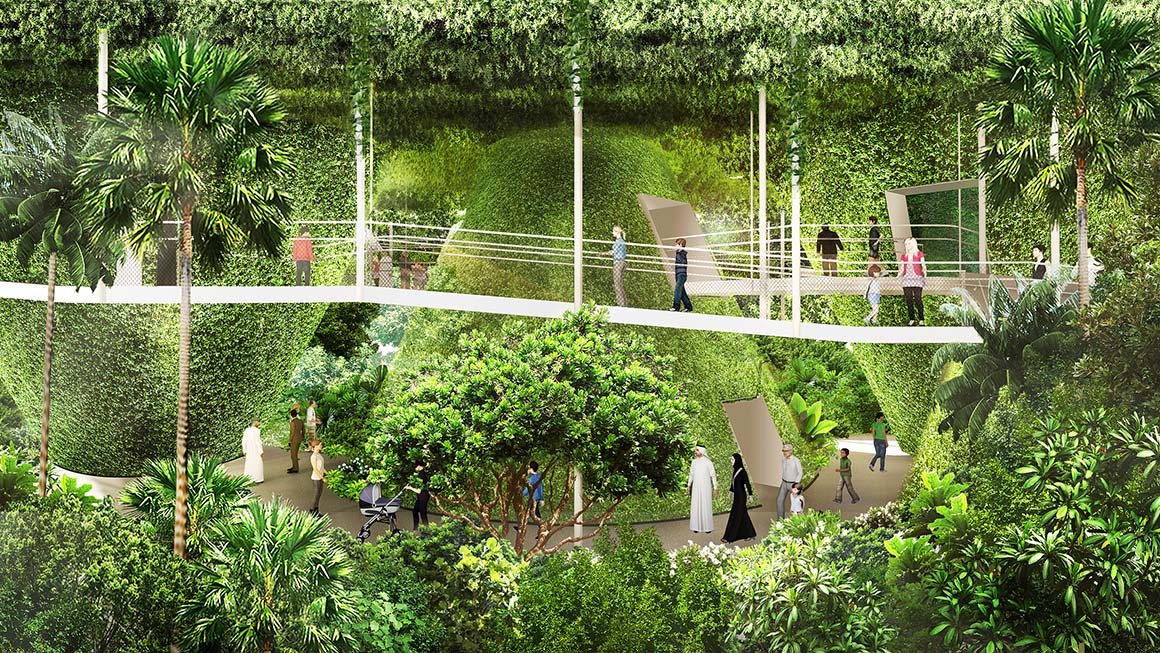
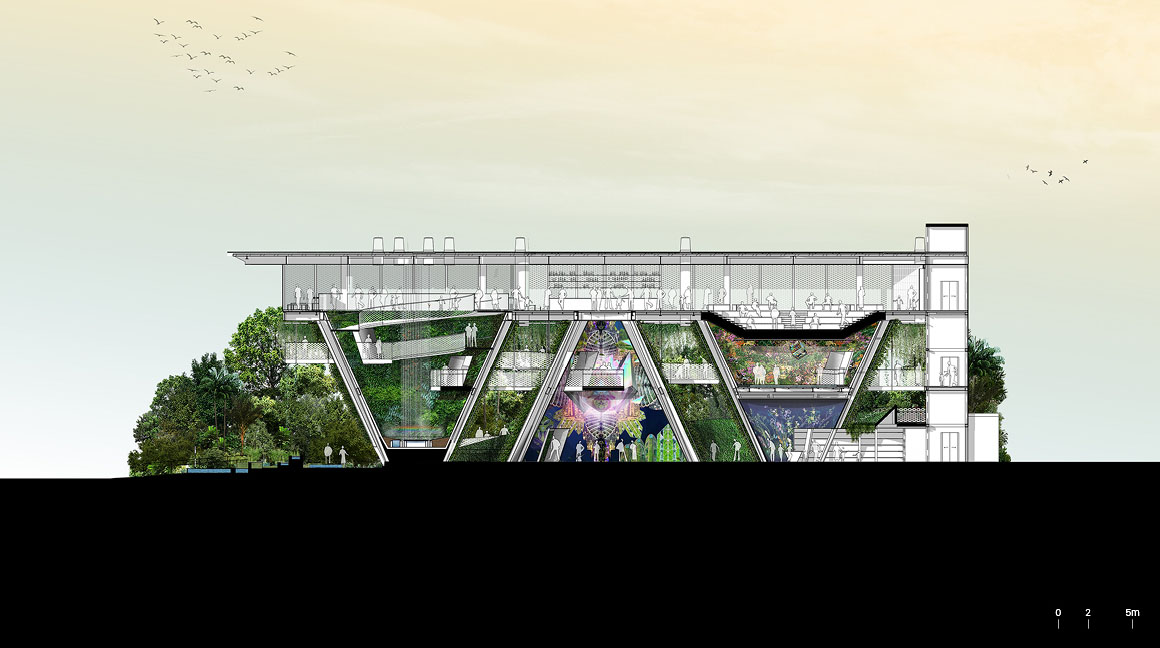
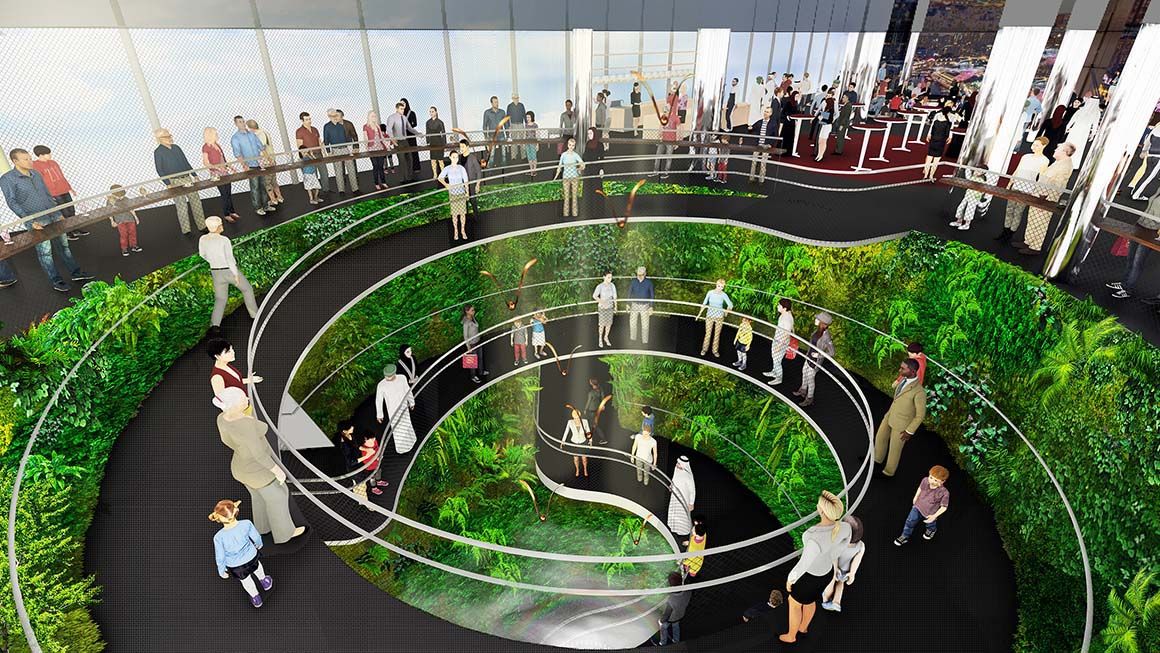
The key idea is to create an oasis in the Arabian Desert. The pavilion’s usable areas are maximized and multiplied through stacked layers to form a voluminous, three-dimensional green space. The ground plane is a lush oasis of tropical trees, verdant shrubs and vibrant orchids, capped with a spectacular hanging garden and anchored by three cones draped in vertical greenery.
The landscaped garden cones are thematic volumes with sensory and multimedia displays that engulf the visitors in a refreshing and memorable experience. A meandering canopy walk brings visitors around and through the cones and emerges to an open sky market platform. Sheltered by the solar canopy and cooled with fine mist fans, visitors learn more about Singapore’s DNA from the array of exhibits and programs. Despite the heat of the desert, the visitors’ journey is made comfortable and enjoyable by the combination of shade, evapotranspiration cooling of the vegetation and fine mist fans that cool the air by 5-10 degrees Celsius.
The uniqueness of the Singapore Pavilion is that, despite its location in the desert, it is green, soft and alive, demonstrating the great potential of the respectful, seamless integration and co-existence of nature and architecture. It represents a captivating and forward-looking Singapore, one that is sociable, sustainable and livable, and shows a way that architecture can make a meaningful contribution to the fight against the effects of climate change.





























